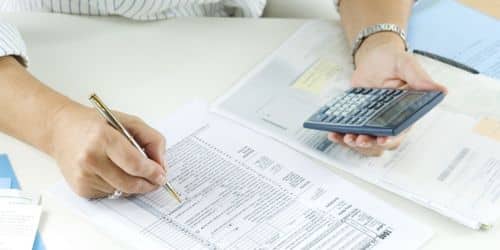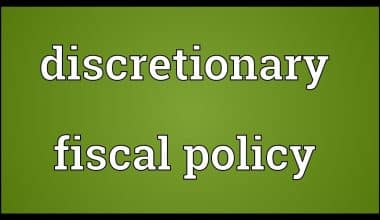Businesses allocate a certain amount, known as a depreciation expense, every fiscal year to efficiently monitor the reduction in the value of their assets over time. Businesses use this method to rigorously account for the monthly or yearly depreciation of their assets. It ensures that their financial statements, including the balance sheet, income statement, and cash flow statement, accurately reflect their true financial condition. You must follow a series of rules and identify the precise assets that match the criteria for this attractive tax break to take advantage of a one-of-a-kind depreciation allowance. In this article, I will delve into the special depreciation allowance for qualified property. I will also outline the individual items that fit the criteria for this beneficial tax incentive. So, keep reading!
What Is Special Depreciation Allowance?
The highly advantageous tax incentive known as the special depreciation allowance (SDA) enables businesses to deduct a considerable portion of the expenses associated with qualifying assets during the first year of use. Also, businesses can significantly reduce their tax liability and enhance their financial position by leveraging this provision. Businesses can leverage the special depreciation allowance to effectively minimize their tax liability during the initial year of using a qualifying asset. In the realm of financial management, companies typically depreciate assets, gradually diminishing their value over time.
In addition, various factors determine the rate at which an asset depreciates, including the specific type of asset and the methodology used to calculate its depreciation. Businesses have the opportunity to deduct a substantial portion of the expenses associated with eligible assets during the initial year of utilization with this generous allowance. This provision effectively minimizes a business’s tax obligations and bolsters its available cash flow. The Straight-Line Depreciation Method (SDA) contributes to the overall accumulated depreciation of a company, just like any other depreciation deduction.
Read also: DEPRECIATION: Definition, How to Calculate It, and Causes.
How Does Special Depreciation Work?
Special depreciation is a valuable provision that offers an additional allowance for property owners. Individuals can claim an extra deduction in the very first year that they place a property in service and undergo depreciation under the Modified Accelerated Cost Recovery System (MACRS) method. This advantageous provision can significantly enhance the financial benefits for property owners, providing them with an advantageous opportunity to maximize their tax deductions. The automatic calculation of this supplementary allowance is contingent upon your decision to not opt out of the special depreciation by checking the designated checkbox.
Understanding Special Depreciation Allowance
The exceptional depreciation allowance allows qualifying businesses to deduct a large portion of the initial investment in the year it is put into operation. New machinery and tools were also encouraged for businesses. The percentage of assets susceptible to deduction varies according to work tenure. The property must meet certain criteria for the specific depreciation allowance to apply. Computer software, hardware with a useful life of 20 years or less, and qualified improvement property (particularly certain interior changes to nonresidential structures) are generally eligible products. It is necessary to acquire and bring into service service-specific long-term operational property and aircraft after September 27, 2017, and before January 1, 2023, or 2024. The Tax Cuts and Jobs Act of 2017 made it possible to take 100% more special depreciation. It made some pre-owned assets eligible for the special depreciation allowance.
As a result, qualifying assets placed in service after September 27, 2017, but before January 1, 2023, are eligible for 100% depreciation. There are rules for taking advantage of the exceptional depreciation allowance. Properties utilized in a partnership or during a short tax year may not be eligible, while properties used mostly outside the United States are not eligible at all. If a corporation disposes of an asset too soon or stops utilizing it, recapture rules may apply. The company must recover some of its previous years’ exceptional depreciation allowances. A specific depreciation allowance encourages businesses to purchase machinery and other capital assets by allowing them to write off the expense more rapidly and pay less in taxes.
What Is Eligible for a Special Depreciation Allowance?
The special depreciation limit applies to both new and used property that fits the criteria. This category covers software, water company property, and qualifying advancement property. This provision can significantly reduce a company’s taxable income and save them money. As a result, to be eligible for this beneficial depreciation restriction, enterprises must carefully examine their assets. A firm requires a wide range of physical assets. Daily office work requires computers, printers, and seats. Manufacturing and farming equipment also speed up corporate procedures. This includes work vehicles such as cars and trucks. Commercial storage facilities and stores are additional instances of touchable items. Lastly, this category includes any other business objects that you can touch.
Off-the-shelf software is useful in a variety of industries and businesses. This software fulfills the needs of businesses and is simple to purchase and install. This category excludes software designed to suit a specific purpose. QIPs are interior modifications to buildings that are not houses. These modifications are made after the structure has been in operation for some time. The QIP does not cover lifts and enlargements. The Quality Improvement Program (QIP) makes improvements to improve how and how well a location works. Indoor lighting, HVAC, and security are all upgraded.
These modifications can improve the appearance of companies, reduce energy use, improve air quality, and make them safer. QIP employs cutting-edge technologies to improve a location’s quality and performance, making it more delightful for renters and guests. QIPs were not eligible for bonus depreciation due to a drafting error in the law. The Consolidated Appropriations Act of 2021 made a technical modification that corrected this error. QIP is no longer eligible for bonus depreciation.
You may want to see: BONUS DEPRECIATION: Definition, Example, and Rate For 2023
What is Section 179 Allowance?
Section 179 of the esteemed IRS Tax Code presents a remarkable opportunity for businesses to avail themselves of a substantial write-off. Businesses can fully deduct the cost of purchasing any qualifying piece of software or hardware in the year it was got. By taking advantage of Section 179, businesses can significantly reduce their taxable income and optimize their financial standing.
Special Depreciation vs. Section 179
Depreciation frequently associates with tax benefits, such as bonus depreciation and Section 179 deductions. If the taxpayer uses the item for commercial purposes more than half of the time, they can claim the depreciation expense under Section 179. Companies can deduct a part of the cost of new assets purchased and used during the current tax year, resulting in tax savings. When compared to bonus depreciation, Section 179 has fewer rigorous timing limitations. Section 179 allows taxpayers to defer the full cost of eligible assets until a later year or claim a partial deduction this year. Bonus depreciation establishes the maximum allowable depreciation in stone.
Businesses, on the other hand, may be eligible for accelerated depreciation on greater investments. Bonus depreciation has no price restriction; you can deduct the entire cost of a single item in a single year if you like. In contrast, we deducted a maximum of $1,080,000 for Section 179 in 2022 (based on capital equipment expenditures of $2,700,000). Different tax programs appeal to different types of taxpayers. Not all property improvements are qualified for bonus depreciation, although some may be Section 179 eligible. Bonus depreciation, on the other hand, is not subject to yearly revenue limits for enterprises, unlike Section 179 deductions. In the same tax year, you can claim Section 179 and bonus depreciation deductions.
What is AMT Special Depreciation Allowance?
The Alternative Minimum Tax (AMT) special depreciation allowance, commonly referred to as AMT bonus depreciation, serves as a lucrative tax incentive that aims to stimulate business investments in fresh equipment and other capital assets. The tax code encompasses a unique provision that specifically caters to businesses that fall under the alternative minimum tax. This provision allows firms to deduct a percentage of eligible asset expenses in the year they are put into service.
This alternative allows businesses to forgo the traditional method of depreciating these assets over an extended period. The property’s kind and year of service determine the depreciation percentage. The primary objective of the AMT special depreciation allowance is to furnish businesses with an enhanced avenue for tax savings, thereby bolstering their cash flow. It is crucial to acknowledge that there are specific regulations and constraints about this tax incentive. Therefore, businesses should seek guidance from a qualified tax professional to ascertain their eligibility and gain a comprehensive understanding of how to effectively leverage this deduction.
What Do I Enter For Special Depreciation Allowance?
If you received the special depreciation allowance in your first year of service, you have to indicate the exact amount of special or “bonus” depreciation claimed in the Prior Special Depreciation section. The prior year’s tax return’s Depreciation Statement’s Bonus Depreciation column contains the relevant amount.
How Is the Special Depreciation Allowance Calculated?
The allowance served as the fundamental cornerstone of the property, as it constituted the entirety of the appropriate proportion, amounting to a full 100%. Shortly, specifically on the auspicious date of January 1, 2023, a certain level of mathematical prowess will undoubtedly come into play. The special depreciation allowance is calculated by multiplying the modified basis of the asset by 0.8, as this percentage is deemed appropriate.
What Is Special Depreciation Allowance Listed Property?
The exceptional depreciation exemption is only available during the first year of property use. The allowance is a valuable deduction after the Section 179 expense deduction and before MACRS depreciation.
What Is Depreciation Allowance Also Known As?
A capital allowance is a business’s annual depreciation of capital investment expenses. This allows companies to allocate funds toward their long-term growth and development. These allowances are occasionally known as depreciation allowances.
What Is an Example of Section 179?
To avail yourself of the deduction, it is imperative to adhere to the guidelines set forth by Section 179. These rules stipulate that you must begin utilizing the asset within your business operations. By doing so, you will be able to take advantage of this advantageous deduction. Suppose you acquire a valuable piece of equipment in December 2022, but you postpone its utilization until the following year, 2023. In such a scenario, note that you must exercise patience and wait until your 2023 tax return to claim the Section 179 deduction for this asset.
How Do I Calculate Section 179 Depreciation?
Multiplying the equipment’s cost by its business use yields the Section 179 figure. Businesses can calculate Section 179’s allowable equipment cost using this simple technique.
The Takeaway
The special depreciation allowance is a tax break that businesses can use to entice them to buy assets such as machinery and computers. A corporation can deduct a higher amount of an asset’s acquisition price in the first year of usage, resulting in a substantially reduced tax burden. However, businesses should consult with a tax expert to determine whether they qualify for the special depreciation allowance, how much of a deduction they can expect, and how to ensure compliance with all applicable regulations and limitations.
References
- financialfalconet.com
- learn.roofstock.com
- investopedia.com
Related Posts
- WORKING FROM HOME: How to Do It and Jobs Ideas
- ALLOWANCE FOR KIDS: Should Kids Be Given Allowance?
- TENANT IMPROVEMENT: What It Is, Examples & All You Should Know
- BONUS DEPRECIATION: Definition, Example, and Rate For 2023
- DEPRECIATION: Definition, How to Calculate It, and Causes.
- 40+ Motivational Business Quotes to Inspire You






